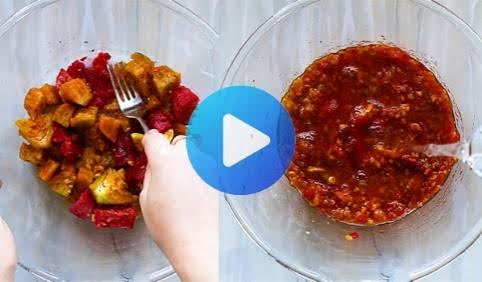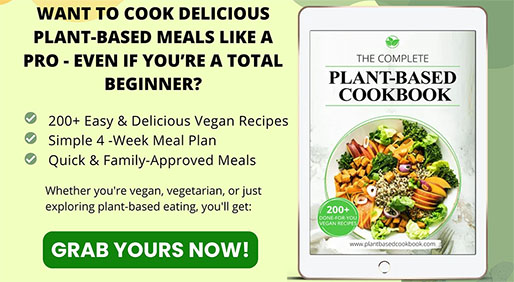So, you’re thinking about eating healthier, maybe even exploring a vegan lifestyle. That’s wonderful. Making positive changes to how we nourish our bodies is a powerful step towards feeling better, having more energy, and managing weight. As someone who works closely with women on their health journeys, I see a lot of enthusiasm for plant-based eating. And there’s good reason for it. But I also see common mistakes that can derail progress.
There seems to be a hidden piece of the puzzle that many women miss when they first start cutting out animal products. It’s not about a rare superfood or a complicated diet plan. It’s something much more fundamental, yet often overlooked in the excitement of going vegan. This is the vegan secret I want to share with you today, the one that can make the difference between feeling vibrant and energized, and feeling tired or frustrated.
Understanding the “Vegan” Label
First, let’s talk about what “vegan” usually means. Simply put, it’s avoiding all animal products – no meat, poultry, fish, dairy, eggs, or honey. People choose this path for many reasons: ethics, the environment, health. When the motivation is health, the assumption is often that just removing animal products automatically equals a healthier diet.
This is where the confusion starts. You see, the food industry has caught on to the vegan trend. Walk down any grocery store aisle, and you’ll find vegan cookies, vegan ice cream, vegan burgers that taste remarkably like meat, vegan mac and cheese, and so much more. It’s easy to swap your old favorites for these new vegan versions and feel like you’re making a healthy choice. But are you really?
The Secret Unveiled: Whole Foods Are the Key
Here’s the secret: The quality of your vegan diet matters far more than just the absence of animal products. The real health benefits of plant-based eating come from centering your diet around whole, unprocessed foods. Think fruits, vegetables, whole grains, legumes (beans, lentils, peas), nuts, and seeds.
Insider Tip: Enjoying Healthy and Flavorful Plant-Based Dishes with The Complete Plant Based Recipe Cookbook
This might sound obvious, but it’s the core principle that gets lost when people focus only on avoiding animal foods rather than choosing nutrient-dense plant foods. A diet of vegan pizza, sugary cereals with almond milk, processed fake meats, and packaged snacks is still a diet high in refined carbohydrates, unhealthy fats, sodium, and empty calories. It might be vegan, but it’s not necessarily healthy. It won’t likely help you reach your weight goals or feel your best.
The secret, therefore, isn’t just going vegan; it’s embracing a whole-food, plant-based way of eating. This approach nourishes your body with the fiber, vitamins, minerals, and protective compounds found abundantly in plants in their natural state.
Why This Matters Specifically for Women
Focusing on whole plant foods is important for everyone, but there are specific reasons why it’s particularly crucial for women’s health.
Meeting Iron Needs
Women, especially during their reproductive years, have higher iron requirements due to menstruation. Iron deficiency is common and can lead to fatigue, weakness, and difficulty concentrating. While red meat is a well-known source of heme iron (which is easily absorbed), plant foods contain non-heme iron, which is absorbed differently.
A whole-food vegan diet can absolutely provide enough iron. The key is to consistently include iron-rich plant sources and pair them with vitamin C to boost absorption.
- Great Plant Sources of Iron: Lentils, chickpeas, beans, tofu, tempeh, spinach, kale, pumpkin seeds, quinoa, fortified cereals.
- Vitamin C Boosters: Oranges, strawberries, bell peppers, broccoli, tomatoes, kiwi.
Simply eating vegan processed foods often won’t cut it. Many lack significant iron, or the iron isn’t paired with vitamin C. Relying on whole foods makes it much easier to meet your needs naturally. For example, a lentil soup with tomatoes and spinach, or a tofu scramble with bell peppers, provides both iron and vitamin C.
Building and Maintaining Strong Bones
Bone health is a major concern for women, particularly as we age and the risk of osteoporosis increases. Calcium and vitamin D are the star players here. Dairy is often touted as the primary calcium source, leading some to worry about bone health on a vegan diet.
However, a well-planned, whole-food vegan diet can be excellent for bone health.
- Plant Sources of Calcium: Fortified plant milks (soy, almond, oat), tofu made with calcium sulfate, leafy greens (kale, collard greens, bok choy – though spinach has lower absorption), broccoli, almonds, tahini (sesame seed paste), dried figs.
- Vitamin D: This is tricky for everyone, vegan or not, as few foods naturally contain it. Our bodies make vitamin D from sun exposure. Depending on location and season, supplementation is often recommended. Look for fortified foods like plant milks and cereals, or consider a vegan D3 supplement (often derived from lichen).
Again, relying on processed vegan junk food is unlikely to provide adequate calcium or vitamin D. Focusing on calcium-rich whole plants and fortified staples is essential.
Hormonal Balance
Plant foods, especially whole ones, can play a positive role in hormonal balance. Fiber helps regulate estrogen levels. Phytoestrogens, found in foods like soy (think tofu, tempeh, edamame) and flaxseeds, can have a balancing effect, potentially easing menopause symptoms for some women. The antioxidants and anti-inflammatory compounds in fruits and vegetables also support overall hormonal health. A diet high in processed foods, vegan or not, tends to promote inflammation, which can disrupt hormonal balance.
Sustained Energy Levels
Do you ever hit that afternoon slump? What you eat dramatically affects your energy. Whole plant foods provide complex carbohydrates and fiber, leading to a slow, steady release of sugar into the bloodstream. This means sustained energy without the spikes and crashes associated with refined sugars and processed foods. Think oatmeal with berries for breakfast versus a sugary vegan pastry. The difference in how you feel hours later can be huge. Consistent energy is vital for juggling work, family, fitness, and everything else women manage daily.
Fueling Your Body: Macronutrients the Whole-Food Vegan Way
Let’s break down the main nutrient groups – protein, carbohydrates, and fats – and how to get them right on a whole-food vegan diet.
Protein Power from Plants
“Where do you get your protein?” It’s the classic question vegans hear. The truth is, protein is abundant in the plant kingdom. You don’t need massive amounts, but adequate protein is crucial for muscle repair (especially if you’re active), satiety (feeling full), and overall body function.
- Top Whole-Food Vegan Protein Sources:
- Legumes: Lentils, beans (black, kidney, pinto, chickpeas), peas, edamame.
- Soy Products: Tofu, tempeh, unsweetened soy milk.
- Whole Grains: Quinoa, oats, brown rice, whole wheat bread/pasta (in moderation).
- Nuts & Seeds: Almonds, walnuts, chia seeds, flaxseeds, hemp seeds, pumpkin seeds.
- Certain Vegetables: Broccoli, spinach, potatoes (yes, really).
The key is variety. Eating a range of these foods throughout the day ensures you get all the essential amino acids (the building blocks of protein) your body needs. Processed vegan meats can be high in protein, but they often come with lots of sodium, unhealthy fats, and additives. Stick to whole sources most of the time.
Smart Carbohydrates for Energy
Carbohydrates are your body’s primary fuel source. The “secret” here is choosing the right kind. Whole-food vegan diets are naturally rich in complex carbohydrates and fiber.
- Excellent Whole-Food Carb Sources:
- Whole Grains: Oats, quinoa, brown rice, barley, farro.
- Starchy Vegetables: Sweet potatoes, potatoes, squash, corn, peas.
- Fruits: Berries, apples, bananas, oranges, melons (all fruits are great).
- Legumes: Beans and lentils also provide quality carbs along with protein and fiber.
These foods provide sustained energy, feed beneficial gut bacteria, and help with weight management because fiber keeps you feeling full. Avoid refined carbohydrates like white bread, white pasta, sugary drinks, and most packaged snacks, even if they are technically vegan.
Healthy Fats for Brain and Body
Fats are essential for hormone production, nutrient absorption, and brain health. A whole-food vegan diet emphasizes unsaturated fats.
- Great Whole-Food Vegan Fat Sources:
- Avocados: Packed with healthy monounsaturated fats.
- Nuts: Walnuts (great for omega-3s), almonds, pecans, cashews.
- Seeds: Chia seeds, flaxseeds, hemp seeds (all excellent sources of ALA, a type of omega-3), sunflower seeds, pumpkin seeds.
- Olives and Olive Oil: Use extra virgin olive oil for dressings or low-heat cooking.
Limit saturated fats found in coconut oil and palm oil (often hidden in processed vegan foods) and avoid trans fats completely (found in some processed baked goods and fried foods).
Key Nutrients to Keep an Eye On
While a whole-food vegan diet is incredibly nutrient-dense, there are a few specific nutrients that require a little extra attention. This isn’t meant to scare you, but awareness helps you build a truly balanced plate.
Vitamin B12
This is the most important one. Vitamin B12 is primarily found in animal products and is essential for nerve function and red blood cell formation. Deficiency can lead to serious, sometimes irreversible, neurological problems. Plants do not reliably contain B12.
- Solution: All vegans need a reliable source of B12. This means taking a B12 supplement or regularly consuming B12-fortified foods like nutritional yeast, plant milks, and cereals. Check labels for amounts. Don’t skip this – it’s non-negotiable for long-term health.
Vitamin D
As mentioned earlier, vitamin D is crucial for bone health and immune function.
- Solution: Get safe sun exposure when possible. Consume fortified foods (plant milks, cereals, some orange juices). Consider a vegan vitamin D supplement (D3 from lichen is preferred over D2 by many experts). Blood testing can determine if you need supplementation.
Omega-3 Fatty Acids (EPA/DHA)
Plant foods like flax, chia, hemp, and walnuts provide ALA omega-3s. Your body can convert ALA into the longer-chain EPA and DHA (found mainly in fatty fish), but this conversion can be inefficient for some people. EPA and DHA are important for brain, eye, and heart health.
- Solution: Include reliable sources of ALA daily (e.g., 1-2 tablespoons of ground flax or chia seeds). Consider an algae-based EPA/DHA supplement. Algae are the original source where fish get their omega-3s.
Iodine
Iodine is vital for thyroid function, which regulates metabolism. While some plant foods contain iodine (like sea vegetables), the amount can vary greatly depending on soil content.
- Solution: Use iodized salt in moderation. Include sea vegetables like nori or dulse occasionally (but don’t overdo it, as amounts vary). Some plant milks are fortified. A multivitamin containing iodine is another option if needed.
Zinc
Zinc supports immune function and wound healing. While found in beans, nuts, seeds, and whole grains, its absorption from plant foods can be reduced by phytates.
- Solution: Eat a variety of zinc-rich foods. Soaking, sprouting, or fermenting beans and grains can improve zinc absorption. Pairing zinc sources with acidic foods (like lemon juice in a dressing on a bean salad) can also help.
Focusing on a varied, whole-food vegan diet makes getting most nutrients easier, but B12 supplementation is essential, and paying attention to D, omega-3s, iodine, and zinc is wise.
The Pitfalls of “Vegan Junk Food”
Let’s circle back to those processed vegan alternatives. While they can be convenient transition foods or occasional treats, relying on them heavily undermines the health potential of a vegan diet.
- High in Sodium: Processed foods, including vegan ones, are often loaded with salt, which can contribute to high blood pressure.
- Unhealthy Fats: Many contain refined oils, saturated fats (like coconut or palm oil), or even trans fats.
- Refined Sugars and Flours: Vegan cookies, candies, and pastries are still high in sugar and refined carbohydrates, leading to energy crashes and potential weight gain.
- Additives: They often contain artificial flavors, colors, preservatives, and thickeners.
- Lower in Nutrients: They generally lack the fiber, vitamins, minerals, and antioxidants found abundantly in whole plant foods.
Think of it this way: A vegan burger patty made from isolated soy protein, refined oils, and various additives is nutritionally worlds apart from a homemade burger made from black beans, oats, and vegetables. The secret is choosing the latter most of the time.
Whole-Food Vegan Eating for Weight Management and Fitness
If weight loss or management is one of your goals, embracing the whole-food aspect of veganism is incredibly effective.
- High Fiber: Whole plant foods are packed with fiber. Fiber adds bulk to meals, helping you feel full and satisfied with fewer calories. It also slows digestion, stabilizing blood sugar and preventing cravings.
- Lower Calorie Density: Fruits, vegetables, whole grains, and legumes generally have fewer calories per bite compared to high-fat animal products and processed foods. You can eat larger, more satisfying portions without overconsuming calories.
- Improved Metabolism: Nutrients found in whole plant foods support a healthy metabolism. Fiber also plays a role in regulating hormones related to hunger and fullness.
- Sustained Energy for Workouts: The complex carbohydrates in whole foods provide the steady fuel needed for exercise, whether it’s cardio, strength training, or yoga.
- Faster Recovery: The antioxidants and anti-inflammatory compounds in plants can help reduce muscle soreness and speed up recovery after workouts, allowing you to train more consistently.
Remember, just being vegan doesn’t guarantee weight loss if you’re eating lots of processed foods. Focusing on whole, minimally processed plants is the strategy that aligns vegan eating with effective weight management and fitness support.
Making the Shift: Practical Tips
Okay, so the secret is out: focus on whole plant foods. How do you actually do that? It doesn’t have to be complicated.
Start Simple
You don’t need to overhaul everything overnight.
- Add, Don’t Just Subtract: Focus on adding more fruits, vegetables, beans, and whole grains to your current meals.
- One Meal at a Time: Maybe start by making your breakfasts fully whole-food vegan (oatmeal, smoothie with greens, tofu scramble). Then tackle lunches, then dinners.
- Simple Swaps: Swap white rice for brown rice or quinoa. Choose whole-wheat bread over white. Snack on fruit and nuts instead of chips.
Plan Your Meals
A little planning goes a long way.
- Weekly Menu: Jot down ideas for breakfast, lunch, and dinner for the week.
- Batch Cooking: Cook a large pot of quinoa, roast a big tray of vegetables, or make a big batch of lentil soup on the weekend to use in meals throughout the week.
- Keep Staples Stocked: Ensure your pantry has beans (canned or dried), lentils, oats, brown rice, quinoa, nuts, seeds, and spices. Keep your freezer stocked with frozen fruits and vegetables.
Embrace Simple Recipes
You don’t need to be a gourmet chef.
- Bowl Meals: Combine a grain (quinoa), a protein (chickpeas), lots of veggies (roasted or raw), and a simple dressing (tahini-lemon).
- Soups and Stews: Lentil soup, black bean soup, vegetable chili are easy, nutritious, and filling.
- Stir-Fries: Use lots of colorful vegetables with tofu or tempeh and a simple soy-ginger sauce served over brown rice.
- Salads: Make them substantial with beans, nuts, seeds, and a hearty base of greens.
Read Labels
When buying packaged foods (even things like plant milk or bread), check the ingredients. Look for minimal ingredients, low sodium, low added sugar, and whole grains. Be wary of long lists of unpronounceable items.
Don’t Strive for Perfection
Aim for progress, not perfection. If you have a processed vegan treat occasionally, that’s okay. The goal is to make whole plant foods the foundation of your diet, the foods you eat most often. Don’t let one less-than-ideal meal derail your efforts. Just get back on track with your next meal.
You Might Be Interested In: Exploring Delicious Vegan Recipes With This Cookbook
Addressing Common Concerns
Making dietary changes can bring up questions. Let’s address a few common ones.
- Social Situations: Eating out or at gatherings can seem tricky. Most restaurants now offer vegan options – look for salads (ask for oil/vinegar dressing), vegetable dishes, pasta with marinara, or rice and bean dishes. Call ahead if unsure. When visiting friends, offer to bring a whole-food vegan dish to share.
- Cost: A whole-food vegan diet can be very affordable. Dried beans, lentils, oats, potatoes, brown rice, and seasonal produce are often inexpensive staples. Buying in bulk can save money. Processed vegan substitutes are usually much pricier than whole foods.
- Time: Yes, cooking from scratch takes some time. But batch cooking, simple recipes, and using tools like slow cookers or pressure cookers can save time during busy weeks. It’s an investment in your health.
Beyond the Physical: Mental and Emotional Well-being
The benefits of focusing on whole plant foods often extend beyond physical health. Many women I work with report feeling mentally clearer, having more stable moods, and experiencing a greater sense of well-being. Nourishing your body with real, wholesome food can have a profound impact on how you feel overall. There’s also a sense of empowerment that comes from taking control of your health through conscious food choices.
This approach isn’t about restriction; it’s about abundance. It’s about filling your plate with colorful, delicious, life-giving foods that support your body from the inside out. That’s the true potential of plant-based eating, and it’s the “secret” I hope you’ll embrace on your journey to better health.
Related YouTube Video
Final Thoughts
Choosing to eat healthier is a journey, and exploring veganism can be a rewarding part of that. Remember the secret we talked about today: it’s not just about avoiding animal products, but about actively choosing whole, unprocessed plant foods. Fruits, vegetables, legumes, whole grains, nuts, and seeds should be the stars of your plate. This approach provides the fiber, vitamins, minerals, and sustained energy women need to thrive. Pay attention to key nutrients like B12, D, iron, calcium, and omega-3s, using fortified foods or supplements as needed. By focusing on the quality of your vegan diet, you unlock the true health benefits and create a sustainable way of eating that supports your weight goals, fitness, and overall well-being for the long run.







